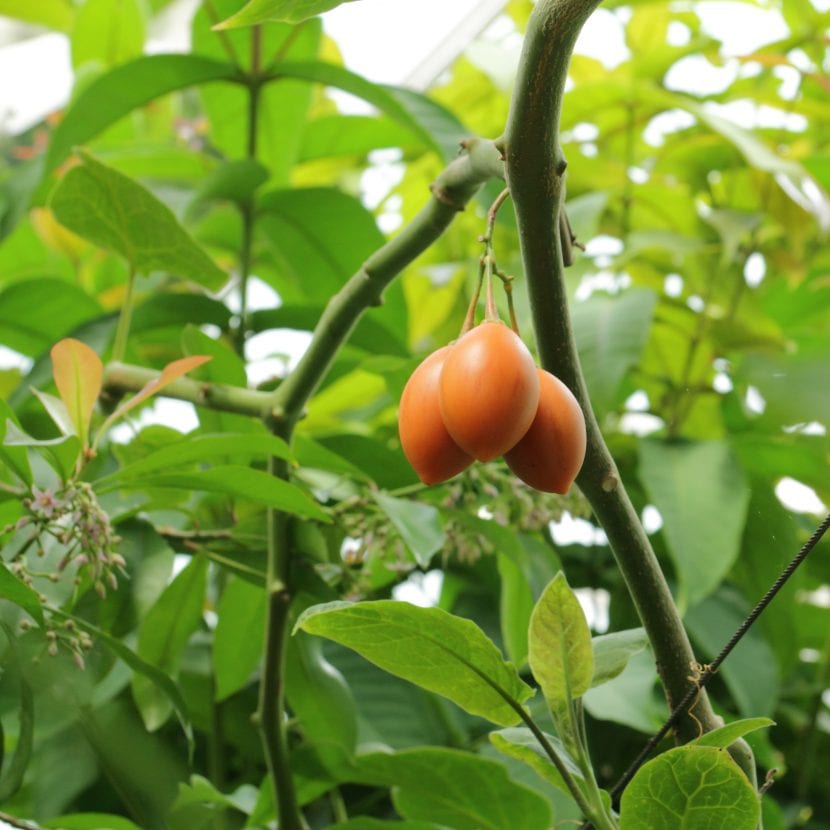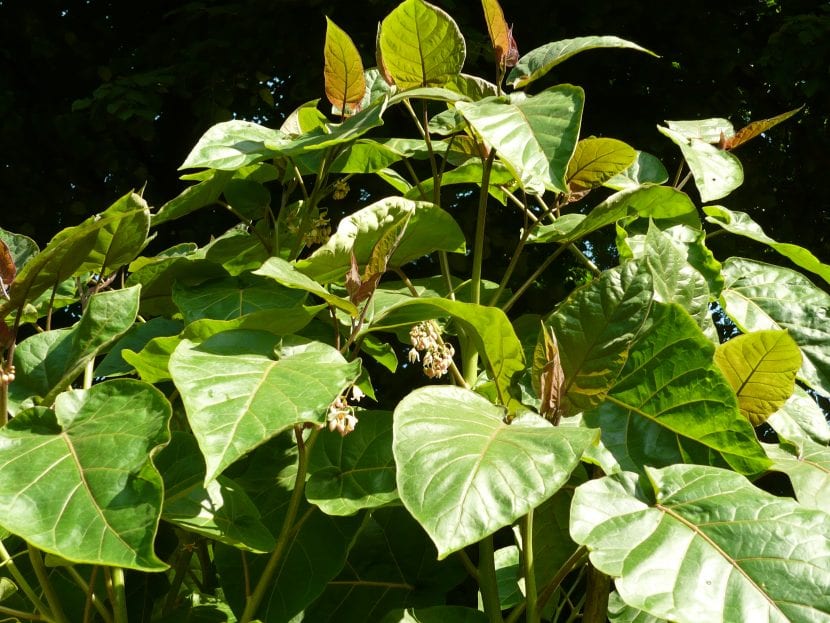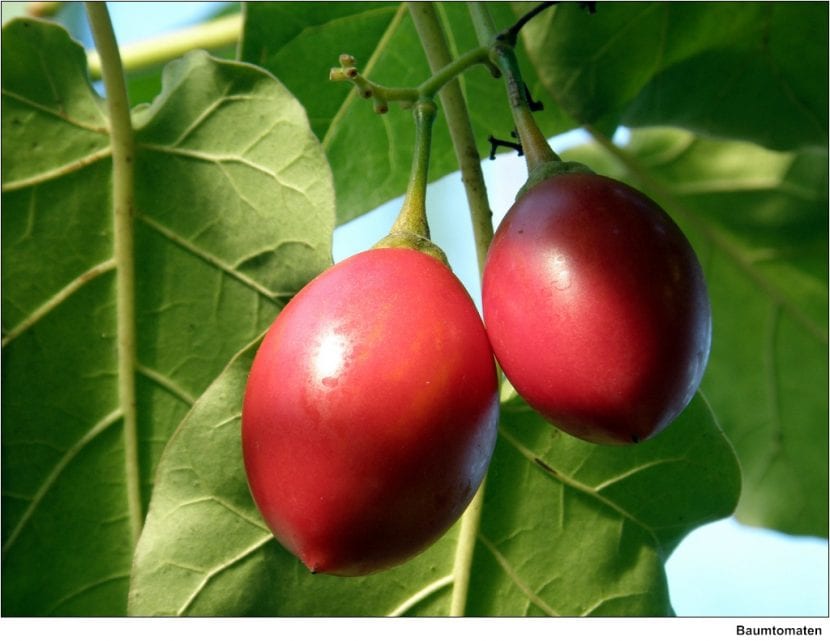
It is one of the horticultural plants that attracts the most attention. Unlike lettuces, peppers, cucumbers, etc. that do not grow more than a few tens of centimeters depending on the species, the Tree tomatoAs its name suggests, it is an arboreal plant that can reach 4 meters in height.
It is not well known yet, and it is a very demanding plant. Even so, in this blog from time to time we introduce you to a very rare or unusual species. In this way, if one day you dare to cultivate it, you will know what you must take into account to be able to carry it out.

The tree tomato, whose scientific name is Solanum betaceum, is a plant that is believed to be native to Chile, Argentina and Bolivia. Today it is grown in various parts of the world, including southern Europe, Africa, the Andes, and in Africa. It is a really very decorative species, with evergreen leaves, large up to 30cm in length, ovate in shape and dark green in color. The flowers develop in terminal clusters, measure 1,5cm in diameter, are pinkish-white in color and appear in spring-early summer.
The fruit is an ovoid berry of about 4 to 8cm x 3 to 5cm. It has smooth, red or orange skin when mature. It is edible, and can be eaten raw or cooked to make juices, sweets and desserts. Its flavor is somewhat acidic, and provide various minerals (potassium, magnesium, phosphorus, iron) and vitamins (A, C and E).

Now, What do you need to be able to develop properly?
- Temperatures between 13 and 24ºC.
- Sandy loam soils, with good drainage and rich in organic matter.
- Regular fertilizer during the hottest months. Use organic fertilizers, such as manure or worm castings.
If you want to reproduce it, you can sow its seeds directly in pots with substrate for seedlings or orchards, putting a maximum of 2 seeds in each one.
Have you heard of this plant?
Hello: I had a stick of water in kokedama ... and I say I had, because for almost 2 years, I was always fine, but I traveled for 45 days and when I returned, I found it with its leaves almost all brown and although I cut them and I rushed to water it, they finished dying… .the question is, is it possible for him to recover or does he have no turning back? I am almost sure it was a lack of irrigation, since my friend said that she poured water on it, but I suspect that she did not submerge it, as is done with kokedamas. Thank you, I await your answer.
Hi Alicia.
Scratch the trunk a little to see if it has green (chlorophyll); if there isn't, then unfortunately there is nothing to do 🙁.
A greeting.
Hello, I want to know if it can be grown in high temperatures, I live in Santa Marta, Colombia
Hello Mariluz.
It depends on what you mean by high temperatures 🙂. If it rises to 45ºC, no, but if it 'only' reaches 30 or 35ºC and has water freely available, then yes.
Greetings.